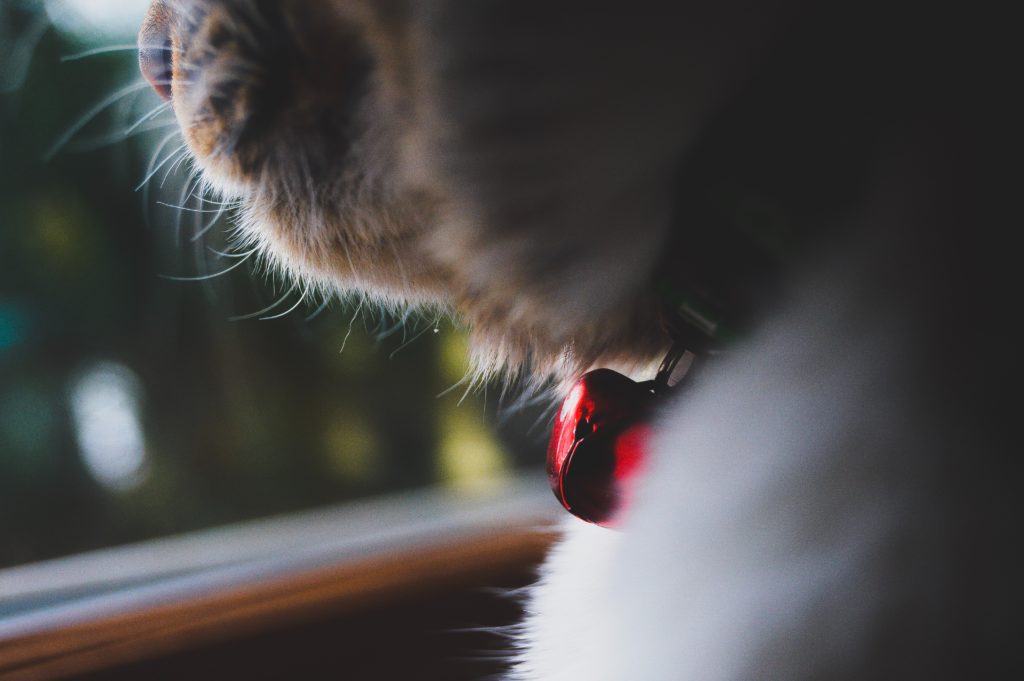 Not only can your cat wear a collar, but she should. Just as with dogs, collars are a necessity if your cat is lost. The collar’s municipal tags and contact information will help her find her way back to you. You may be thinking, But my cat stays inside. Even indoor kitties can slip out through a door, make their way out through a window screen, or become an escape artist when you’re trying to load her up for a trip to the vet. To keep her safe, make sure she has a collar. But is that easier said than done?
Not only can your cat wear a collar, but she should. Just as with dogs, collars are a necessity if your cat is lost. The collar’s municipal tags and contact information will help her find her way back to you. You may be thinking, But my cat stays inside. Even indoor kitties can slip out through a door, make their way out through a window screen, or become an escape artist when you’re trying to load her up for a trip to the vet. To keep her safe, make sure she has a collar. But is that easier said than done?
The Science of Cats and Collars
An Ohio State University, Texas A&M, Cornell, and University of Florida study (yes, these prestigious instituted pooled their impressive brain power to research this) found that three-quarters of the cats in their study wore their collars for the entire six-month duration. Sixty percent of the owners said their cats tolerated the collars “better than expected,” and most planned to keep on using them after the study ended.
Linda Lord, assistant professor of veterinary preventative medicine at Ohio State, says that cats don’t wear collars because their owners believe that they won’t tolerate them or that they pose a danger. But, she says, “A collar with an ID tag is probably a cat’s greatest chance of ever being re-homed or brought back if it is lost.”
Professor Lord adds, “The return-to-owner rate is abysmal for cats. Fewer than 2 percent of lost cats are returned to their owners.” Using a collar can help your cat beat the odds.
6 Easy Steps to Help Collar Your Cat
- Select a collar that is sized properly. Measure your cat’s neck (bribe her, if necessary!) and purchase one that is slightly longer to accommodate for growth. You should be able to fit two fingers between the collar and your cat’s neck.
- Make sure you use a breakaway collar. If your cat gets caught on something, she can escape. This will help give you greater peace of mind, particularly if you have an indoor/outdoor cat.
- Play! The worst time to introduce the collar is when your cat is stressed. Take some time to play with her favourite toys and ensure she is relaxed. After mealtime is often a great time to try.
- Put the collar on. Leave it. Your cat may – and likely will – resist. It’s natural. You would too if someone suddenly put something around your neck. Most will give up after a while because they realize that cannot remove it. If your cat panics or shows signs of immense agitation, take the collar off. Try again, but only in shorter doses.
- Try, try again. Those cats. They sure are independent – and persistent. If yours does succeed in slipping out of her collar, simply put it on again. Soon, she’ll realize that resistance is futile. The key is to be consistent. Keep putting it back on each time.
- Don’t forget her ID tags. Remember to put her municipal tags on, as well as your contact information. You can also have this sewn into the collar for added protection. You can either introduce collar and tags at the same time, or get your cat used to the collar and add the tags later.
And that’s all there is to it! Sure, your cat may protest initially, but soon, she’ll forget she’s wearing a collar. You won’t though; it will give you greater peace of mind and assurance.


